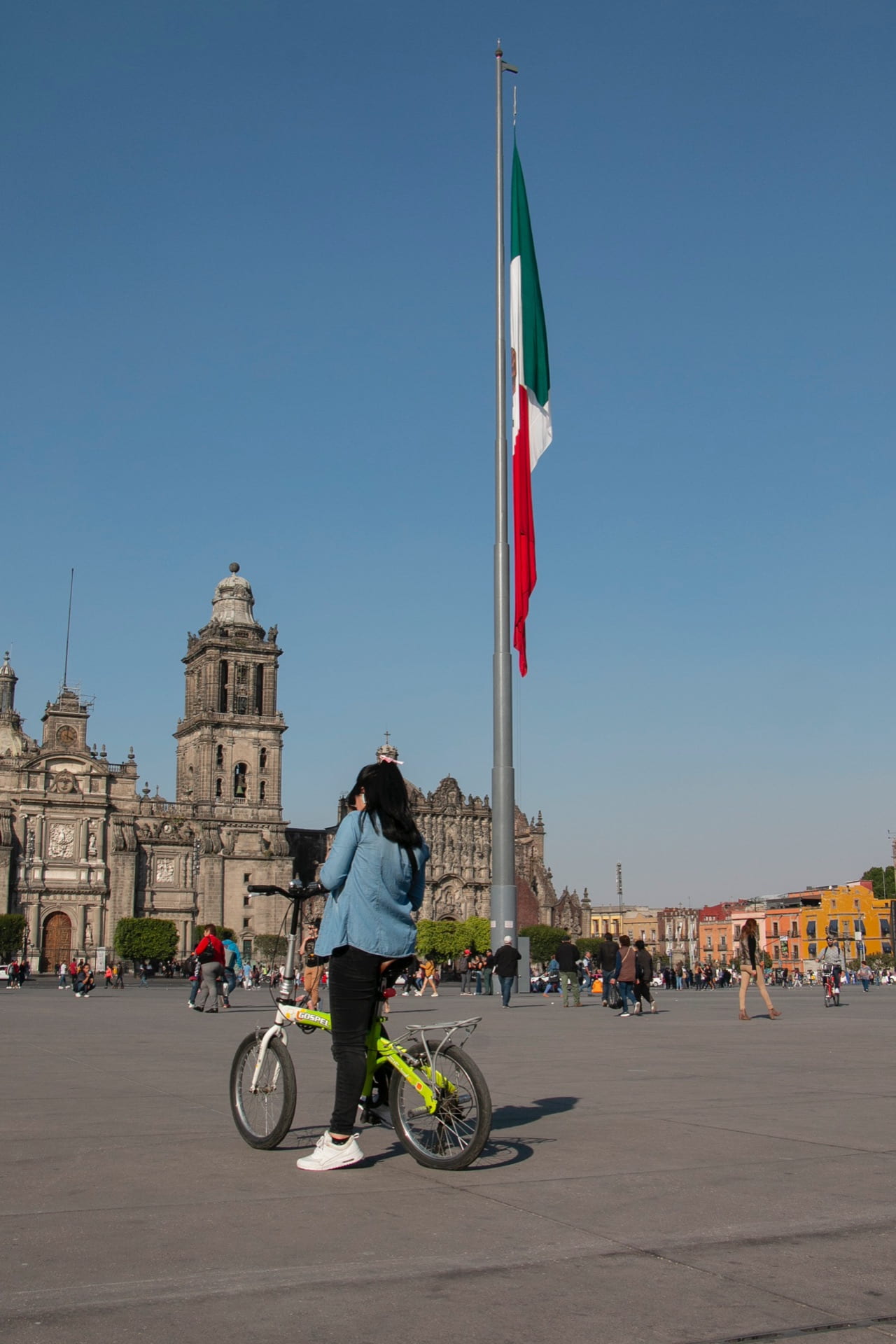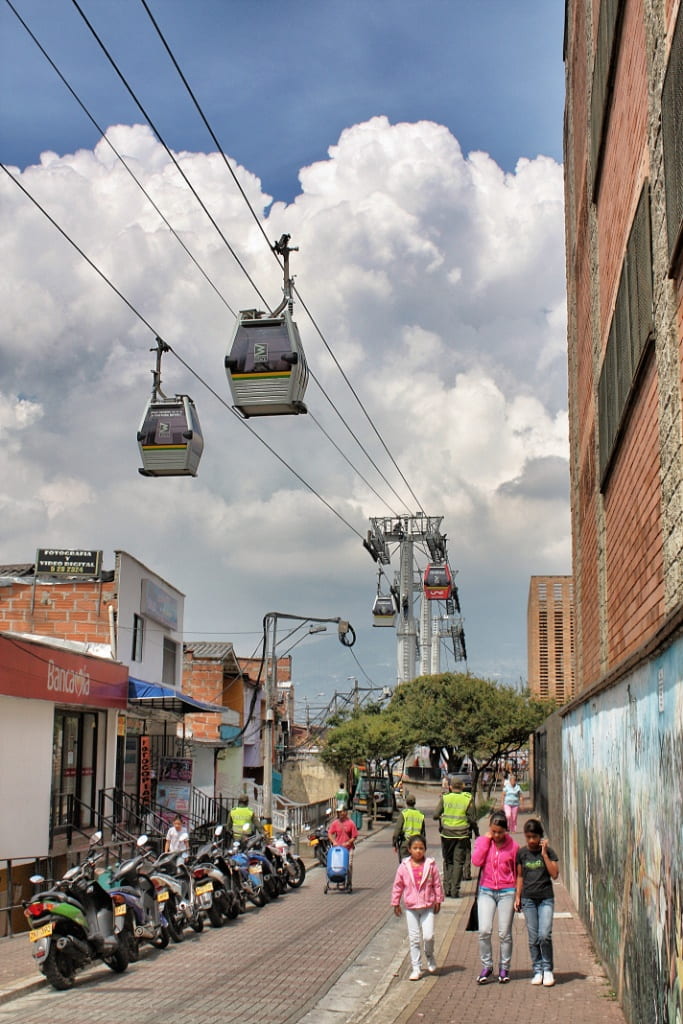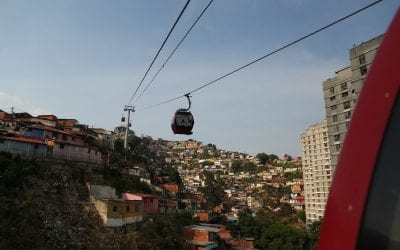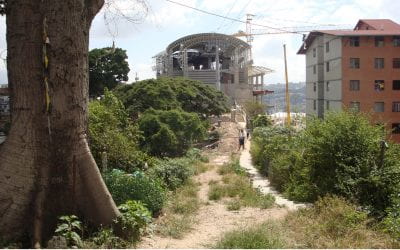New Mobility Paradigms and the Equity Question
As you walk through the streets of Mexico City, you are greeted by a symphony of street vendors and musicians, the delectable aroma of grilled elotes and tamales, expansive plazas made up of iconic art and architecture, and an energy that pulsates at all hours of the day and night. This vibrant metropolis with its rich cultural heritage, built on the ruins of the ancient Aztec city of Tenochtitlan, is home to 21 billion people, an increasingly popular home for young artists and scholars, as well as a tourist destination. As it continues its evolution as a cosmopolitan hub, the city has also made strides in the past few years to expand its networks of transit, increase safety and accessibility for pedestrians downtown, and embrace sustainable development. The capital city has even toyed with the idea of introducing its own version of a “high line” or public greenway created on a former industrial transport network, and has recently inaugurated an overhead cable car line.

Metrobus in Mexico City
The city is just one of many global, urban areas growing in a way that requires new strategies for addressing how people move in space. Inspired by climate change mitigation and other sustainability goals, many Latin American cities are embracing new transportation agendas, reflecting a concerted desire to move away from car dependence. Fewer cars mean more carbon-friendly environments. In urban Latin America, decades of over-urbanization have meant that transportation problems and mobility challenges loom large, with efforts to restructure transportation infrastructures and services often leading to the political successes (and also failures) of certain political authorities.
In a good number of these cities , most particularly Medellín, Colombia, officials have made progress in crafting a range of novel transport and land-use policies to repurpose old transportation infrastructures into vibrant public spaces. Mexico City, like other huge urban epicenters in Latin America, likewise is grappling with mobility and transport infrastructure challenges, particularly those which disadvantage the city’s poorest populations, who rely disproportionately on public transit. At the same time, authorities are under pressure to keep the city economically prosperous so as to insure resources that can be used for infrastructure that serves its resident populations. Such aspirations frequently make it easier for globally competitive firms to secure an urban foothold. To the extent that they bring investments in high-end services, finance, and real estate, not to mention high-tech and innovation industries as well as tourism, retail, and entertainment, their activities hold the potential to change the form and function of the city.
These urban transformations tend to reconfigure urban demographics while also producing pressures to jettison the restrictive zoning and single function land-use models of the past. In Mexico City and elsewhere across Latin America, cities are more integrated living, working and leisure spaces that require less long-distance commuting. But much still needs to be done to counter the egregious climate effects of sprawl while also responding to citizens’ needs to live closer to employment opportunities. In the face of such challenges, urban designers and planners in Mexico and elsewhere are re-imagining city and block form, the nature of infrastructure, and the relationship of work to home in order to provide new models of urbanism that can effectively advance such priorities. Most are doing so with an eye to equity as well as innovation, although mobility justice and transportation as a public good have become equally important aspirational ideals.
With a restructuring of transportation services on the forefront of the urban planning and design agenda, we are seeing a new generation of design professionals focus attention on the urban core and its connectivity to other parts of the city, rather than prioritizing the development of infrastructures that cater primarily to the suburban periphery. While many public sector resources and policies previously focused on the expansion of massive, expensive infrastructure networks—such as highway and roadway development to facilitate car travel within and between suburbs and sites of employment in the city— in many cities of Latin America, including Mexico City, car dominance is no longer accepted without question. And as transportation paradigms shift, so too does the array of actors and institutions involved in transport decision-making. Instead of falling solely under the purview of engineers and other transport infrastructure technicians, transportation policy decisions increasingly include the voices of civil society and private sector actors, who increasingly advocate for a new way of understanding mobility. This includes greater calls for pedestrian-oriented changes in streetscapes and even for technology-inspired transport innovations such as Uber, although the latter also have produced critics who decry the privatization of public services and the equity implications of charging for mobility services with apps that raise prices based on demand metrics rather than supply considerations.

Cable bus in Mexico City
As citizens become aware of the importance of mobility transportation services and infrastructures to their everyday lives and livelihoods, they are becoming mobilized. Mexico City’s Insurgentes-Mixcoac automobile underpass, which drew protests between 2014 and 2017, exemplifies these shifts. Residents of the neighborhoods surrounding the capital project partnered with environmental scientists at the National Autonomous University of Mexico (UNAM) and representatives of mobility-oriented NGOs and well-established social movements to negotiate improved pedestrian, transit and cycling conditions above the roadway. Their aim was to protect the community from heavy-handed interventions that destroyed the urban fabric and undermined sustainability. Alongside municipal technocrats, coalitions of civil society and non-governmental actors have begun to wield significant influence in transportation infrastructure decisions, and this is occurring throughout urban Latin America, not just Mexico.
Socio-spatial Fragmentation Urban Inequality in Latin America
The fact that transportation access is seen as a high priority for growing numbers of Latin American citizens right now has a lot to do with the interconnectivity between socio-economic status, class and the region’s history of urbanization. In many parts of the global south, planners —both urban and national—justified their actions by the modernist assumption that development ought to occur through the conquest and re-shaping of “untamed” spaces. This led to the “colonization” of territories through major infrastructural projects under the guise of integrating people, places and natural resources into a larger project of employment and economic expansion.
This was seen at the level of the city through urban plans that enforced a strict spatial order. Different parts of the city were not only preserved for different social and economic functions; there was little room for any “pre-modern” mixing of land uses or informal activities in those areas once they were designated as sites to reinforce modern economic and political order. These plans thus re-directed the poor and marginalized citizens to liminal (and usually distant) areas of the city where informality was tolerated and where marginality flourished. Even though planners responded by attempting to extend the modernist project to these neighborhoods—usually through state investments in workers’ housing, transport, and services—fiscal constraints meant that such goods were only provided for wealthier urban residents. Those living in the informal peripheries of the city, so called “no man’s lands” outside the social, spatial, and political bounds of the formal city and its servicing regime were ignored (For more on the impact of modernist planning on the spatial form of Latin American cities, see my “Modernist Planning and the Foundations of Urban Violence in Latin America.” Built Environment vol. 40 no. 3 (2014): 376-393.)
- Girl with bike in plaza in Mexico City
- Metrocable in Medellin. Photo by Jorge Gobbi
The Latin American planner’s preoccupation with the trappings of modernity furthered the explosion of neighborhoods without basic services, formal property rights and political recognition—rendering the citizens of these neighborhoods as effectively “invisible” to city officials. These patterns not only set the basis for more social and spatial separation rather than integration; they also reinforced the view that those who lived in the informal and marginal neighborhoods were second-class citizens whose urban lifestyles and practices both sustained and challenged the larger modernist project.
Against this backdrop, many of the current urban design and planning efforts to rethink transportation, whether through new mobility services or other infrastructural interventions, are not merely about enhancing urban form using a modern designer’s toolkit. In fact, these efforts speak to a larger debate around who has the “right to the city” and whether new visions for linking transportation and land use can appropriately address historical issues of socio-spatial inequity. This has inspired mobilizations, such as those in São Paulo several years back, where citizens actively pressured local authorities to rethink the accessibility and equitability of their transportation services. It has also inspired a new theoretical discourse in the field of urbanism, which some have called the mobility “turn,” leading to a new way of conceptualizing the historical and contemporary importance of movement in the lifeworlds of individuals and society.
In many parts of Latin America, rapid urbanization has been accompanied by income and wealth expansion, along with rising lower-middle- and middle-class expectations about suburban living and car ownership and an aversion to limiting automobile expansion. The political capital it takes to restructure a bus industry dominated by a range of small providers who offer low-cost (and often low-quality) services is enormous, because citizens are often unwilling to pay more for daily transport even if it means service improvements. This complicates the new urban agenda and public and private sector capacities to build coalitions around sustainable transport priorities.
The Political Economy of Sustainable Transport Policy
Fiscal constraints on policy action also have a bearing on the local state’s capacities to change course with respect to transportation infrastructure and priorities. In much of urban Latin America, the embrace of democratization came with decentralization of decision-making power; but this in turn has meant that local revenue generation capacities are often limited, if not under-institutionalized. Local authorities lack a track-record of regulation and proactive investment in transport and many are starting from scratch with respect to forging new political coalitions or institutional mandates to guide transport policy change, and are doing so with limited financial resources. More significantly, given the history of informality and the longstanding practice of private provision of collective transport, often built around a fragmented array of bus and jitney organizations, efforts by urban authorities to introduce new transport services, even if they do have the resources, always requires extremely skillful political negotiation and perhaps even buy-outs.

Ciclovia in Bogota
Thus, transportation problems loom large across urban Latin America, with efforts to restructure transportation services often informing the success and failures of certain political authorities—such as former Bogotá mayor Enrique Peñalosa whose global reputation revolves largely around his transportation innovations, starting with bus rapid transit and most recently focused on a massive expansion of bike lanes. That city’s current mayor, Claudia López, successfully campaigned on an even more radical initiative, titled the “Green Corridor Septima,” intended to better integrate the city’s transport network with the aim of reducing climate-changing emissions. When authorities are successful in bridging the gaps between cost and effective service, and when they do so while also advancing sustainability goals, they frequently advance their political standing. Yet this is easier said than done and local authorities are often constrained by the very same urbanization patterns that put these issues on the agenda in the first place. It is one thing to both effectively and sustainably meet transportation needs for a few million inhabitants, and quite another to do so in sprawling metropolitan areas of 15-20 million like São Paulo or Mexico City, where the urban footprint territorially extends beyond the city’s political boundaries.
Just as significantly, the task of simultaneously advancing the regeneration or upscaling of central city areas while also establishing well-ordered and affordable transport connectivity between a refurbished or redesigned city center and its surrounds is challenging. After all, these two goals are often in conflict, as they both require financial resources and are built on slightly different views of what the future city should look like. Residents in the periphery prioritize connectivity, while citizens who already have transport access to city centers embrace downtown redevelopment. Additionally, because urban renovation priorities are often tied to a city’s global profile as a site for financial services, real estate and upscale development, they speak to the city’s future economic growth and thus to its economic elite. In this regard, they may also generate more political support because, in the Latin American context, economic development priorities still trump environmental priorities. Yet, at the same time, the privileging of global city redevelopment goals often pulls needed resources away from transportation, thus alienating large swathes of the urban citizenry, particularly those who are pushed even further outward from the center as investments in urban redevelopment raise property values. Even though sustainability goals have become central to the urban redevelopment agenda, the conflict between these urban visions is hindering substantial progress while also making its mark on local politics.
Urban Design for Equity
All this suggests that efforts to rethink the design of cities and their transportation infrastructures are much more than just opportunities to re-imagine urban forms or advance environmentally sustainable urbanism. They are also the main entry point for rethinking a more equitable and socially inclusive city, the nature of local governance, and the robustness of local democracy.
To address these concerns requires socially perceptive urban design and planning sensibilities, informed by constant interrogation and a commitment to citizen participation. What sorts of activities and locations does a given transport policy or project serve, and what does this imply about urban development trajectories? Will a particularly innovative transport design shift the mandates of public agencies or energize civil society and urban denizens—not just transport experts or business investors— in ways that expand local and regional capacity to promote equity? And who should be driving this agenda with what livability priorities in mind? What is becoming increasingly clear is that city builders need to move beyond the traditional preoccupation with technical and physical upgrades of the urban built environment and its infrastructural facilities, if they want to grapple with the complex interrelations between the evolving scale and function of cities and profound inequities of mobility and accessibility.
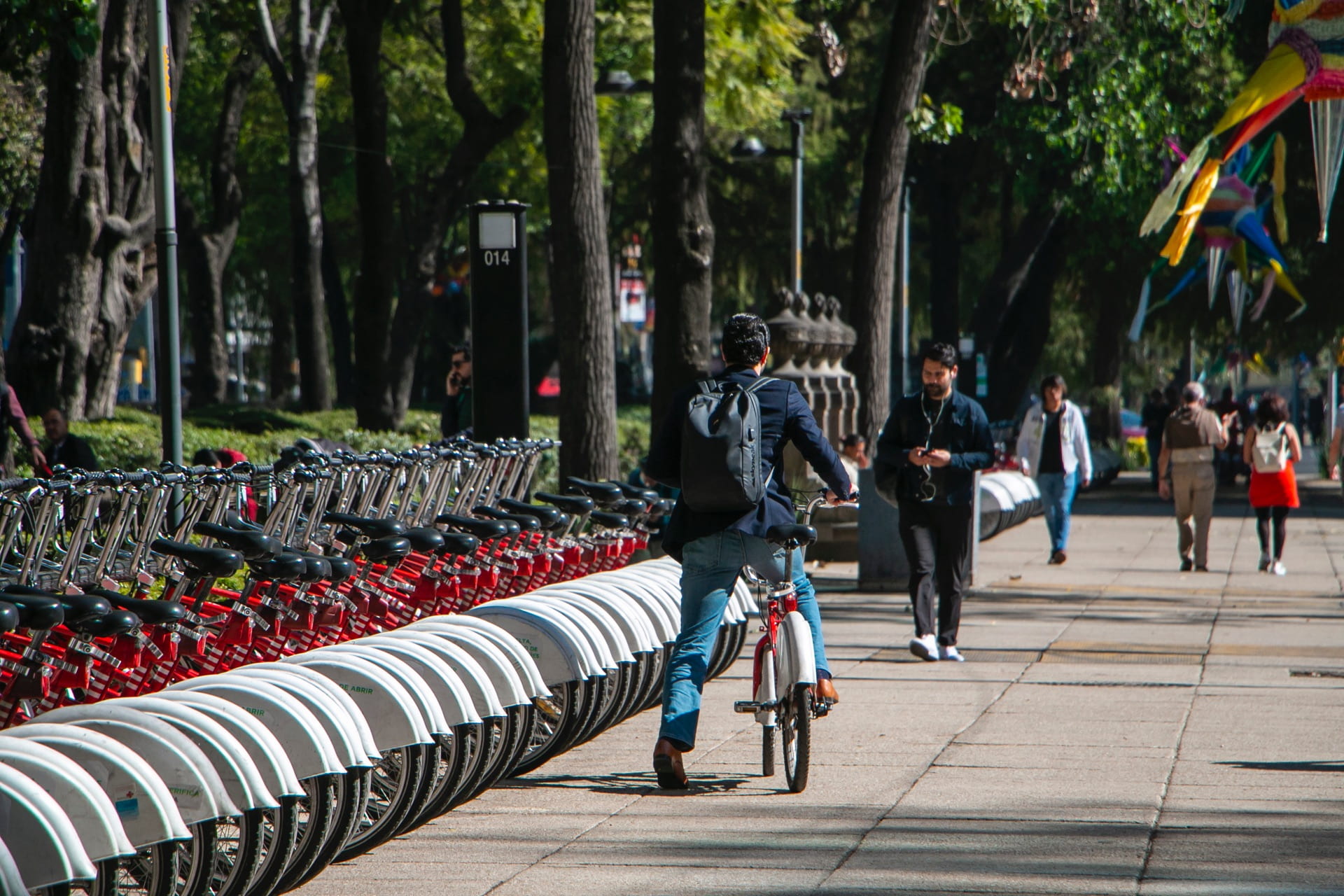
Bike lanes in Mexico City
Those who formulate new transportation infrastructures for a 21st-century city should recognize, mitigate or reverse the patterns of socio-spatial exclusion that has characterized the modern Latin American metropolis—conditions that produced a clamoring for better transportation services in the first place. They must prioritize the value of creating connectivity at the scale of the city, and not merely at given site or subsection. Additionally, as new projects and policies are implemented, the lens through which they are evaluated must also change. Though scholars historically evaluated the equity implications of transportation by focusing on how a given service will redistribute individual user costs vs. benefits or offset private sector-driven inequalities, those metrics are no longer adequate. Transport equity ought to be evaluated through the lens of spatial patterns and the classist, racialized and gendered mobilities they enable. These remain among the thorny, intractable dilemmas of transport and spatial planning under conditions of ongoing urbanization.
Fall 2021, Volume XXI, Number 1
Diane E. Davis is Charles Dyer Norton Professor of Regional Planning and Urbanism in the Department of Urban Planning and Design at Harvard’s Graduate School of Design (GSD). Co-author of Transforming Urban Transport (Oxford University Press, 2018) and multiple other books, Davis has written extensively on the politics of urban policy and the relationships between urbanization and national development. In recent years she has published a range of articles on urban governance, social movements, urban violence, new territorial forms of sovereignty, and disaster recovery, with special attention to Mexico, a country she has studied for the last several decades. Her current book project is a history of police corruption in Mexico.
Related Articles
Editor’s Letter: Transportation
Bridges. Highways. Tunnels. Buses. Trains. Subways. Transmilenio. Transcable. When I first started working on this issue of ReVista on Transportation (Volume XXI, No. I), I imagined transportation as infrastructure.
Modernity in Black and White
For years, one of my favorite pieces in the Museo de Arte Latinoamericano de Buenos Aires (MALBA) was the iconic Abaporu (1928), by Brazilian artist Tarsila do Amaral: a canvas…
Transportation Itself Does Not Build Urban Structures
English + Español
Fina Rojas lives in the 19 de Abril at Petare, the densest and one of the largest self-produced neighborhoods in Latin America. Most researchers and policymakers define self-produced neighborhoods as “informal settlements.” However, these settlements occur from…

